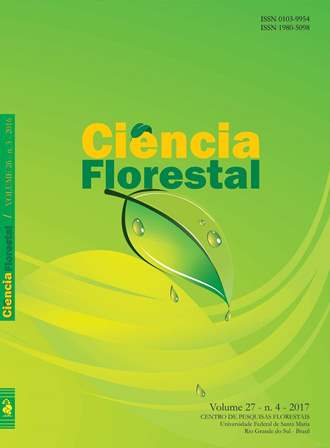STRUCTURE OF THE TREE COMMUNITY AND EDAPHIC CHARACTERISTICS OF AN URBAN FRAGMENT
DOI:
https://doi.org/10.5902/1980509830322Keywords:
canonical correspondence analysis, ‘Desamparo’ forest, phytossociology.Abstract
In Brazil, there are forest fragments inserted in the urban area under threat of degradation. The Desamparo Forest (Araguari-MG) is an important forest protecting springs at an urban park. This study aimed the phytosociological survey of trees from a forest gradient and perform soil analysis. Twenty-five plots of 20 x 20 m were plotted and sampled all trees with the 1.30 m ≥ 15 cm of circumference and also collected soil samples at 0-20 cm depth for chemical analysis as well as soil moisture and the sloping ground. To determine whether the chemical properties, soil moisture and the slope influenced the distribution of plant species in the forest fragment, it was performed canonical correspondence analysis (CCA). The community had a very high number of species (94) and trees (1760), with occurrence of edge species and common open areas even in the forest hinterland, which indicates that there are human impacts on the community. CCA showed the environmental heterogeneity with the formation of three groups, one formed by the plots near to the river bed with higher soil moisture and lower slope, other plots formed with large slope with predominance of generalist species of dry forest, and other strongly correlated aluminum. Therefore, this forest fragment can be considered an important urban relict with high species richness but however past impacts influence the structure of the tree community, which is in an intermediate stage of succession.Downloads
Download data is not yet available.
Downloads
Published
2017-12-11
How to Cite
Vale, V. S., Araújo, G. M., Oliveira, A. S. de, Prado Júnior, J. A., & Santos, L. C. da S. (2017). STRUCTURE OF THE TREE COMMUNITY AND EDAPHIC CHARACTERISTICS OF AN URBAN FRAGMENT. Ciência Florestal, 27(4), 1415–1428. https://doi.org/10.5902/1980509830322
Issue
Section
Technical Note







